I’ve just received my Pixel Pump from Robins Tools.
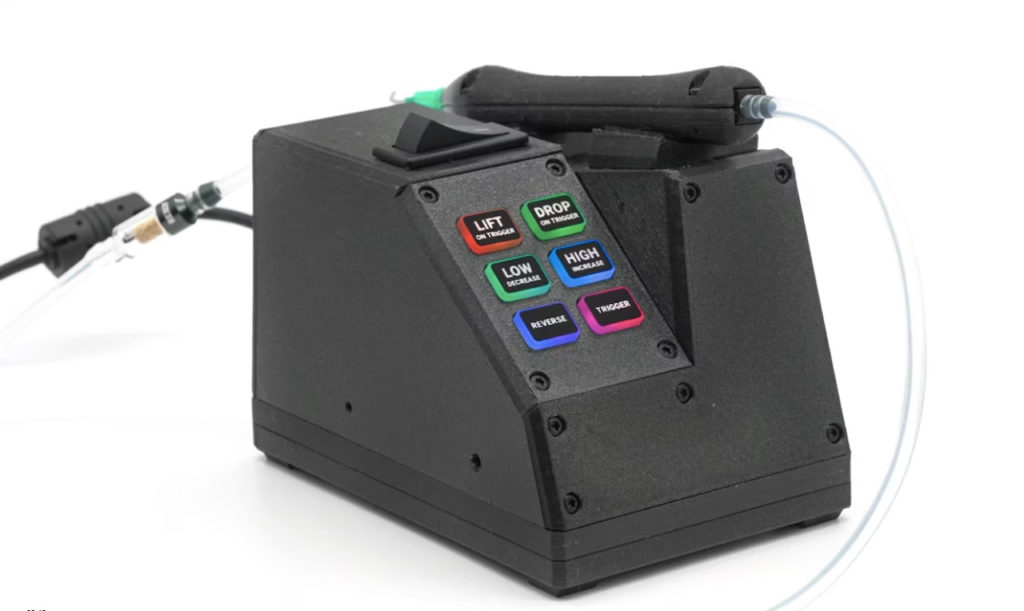
The Pixel Pump is an open source vacuum tool for manual SMT assembly. Pixel Pump originally featured on CrowdSupply, for delivery in 2023. Now, with all of us CrowdSupply supporters fulfilled, the Pixel Pump is finally available for delivery to new customers.
When I first came across the Pixel Pump in 2022, I was immediately impressed by the hard work and the attention to detail that Robin Reiter (the designer), had already put into developing and perfecting his Pixel Pump design.
Meanwhile, I was still manually Pick & Placing my SMD components using an aquarium pump that I’d modified to suck instead of blow. This had worked for me for several years, but was a little tedious, as the converted aquarium pump really only just had enough suction, and it was always sucking! I had no easily controlled way of turning it on or off.

Obviously I was already sold on the idea of vacuum pump Pick & Place. In an earlier life, I had relied on tweezers, before the move to my simple aquarium pump solution significantly improved the process.
So, the appeal of the Pixel Pump was that it had been purpose designed specifically for the job of SMD placement, with some well thought out controls, and it also featured a foot pedal for easy control of the pump while keeping your hands free.
I’d also previously 3D printed some of Robin’s earlier design of SMD Magazines, which he’d shared on Thingiverse. These SMD Magazines have been awesome for tidily storing my SMD components and for feeding my manual Pick & Place process, without having to resort back to tweezers (and turning over workbench dumped SMD components, so they’re up the right way!).
Robin had since refined his SMD Magazine design, to be even better, and was also planning on an injection mould production run with the Crowdfunding backing.
Crowdfunding this refined set of manual Pick & Place tools on CrowdSupply was a no-brainer for me. That was last year. Now, I finally have the finished products.
Robin not only took the time to perfect his design, he also demonstrated a high level of perfectionism when it came to designing his product packaging. He also ensured everyone was kept up-to-date with his progress, via regular social media posts.
The following sequence of photos show my unboxing of the delivered Pixel Pump, SMD Magazines, and SMD Magazine Rail. I think you’d have to agree that Robin has done a fine job!
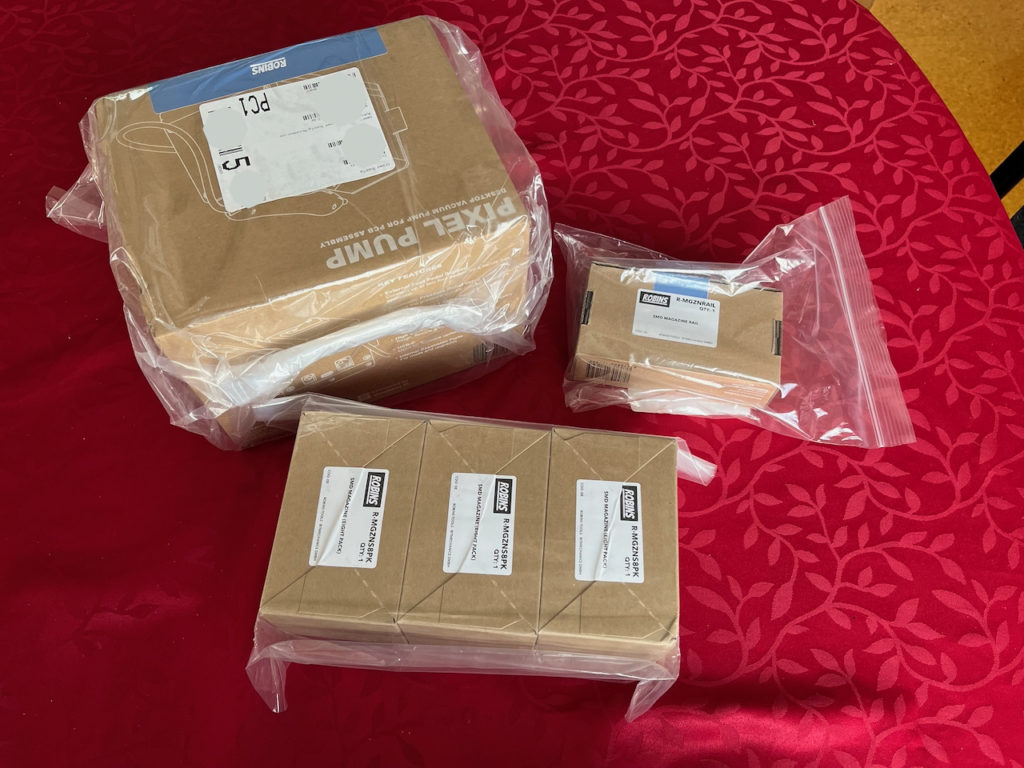
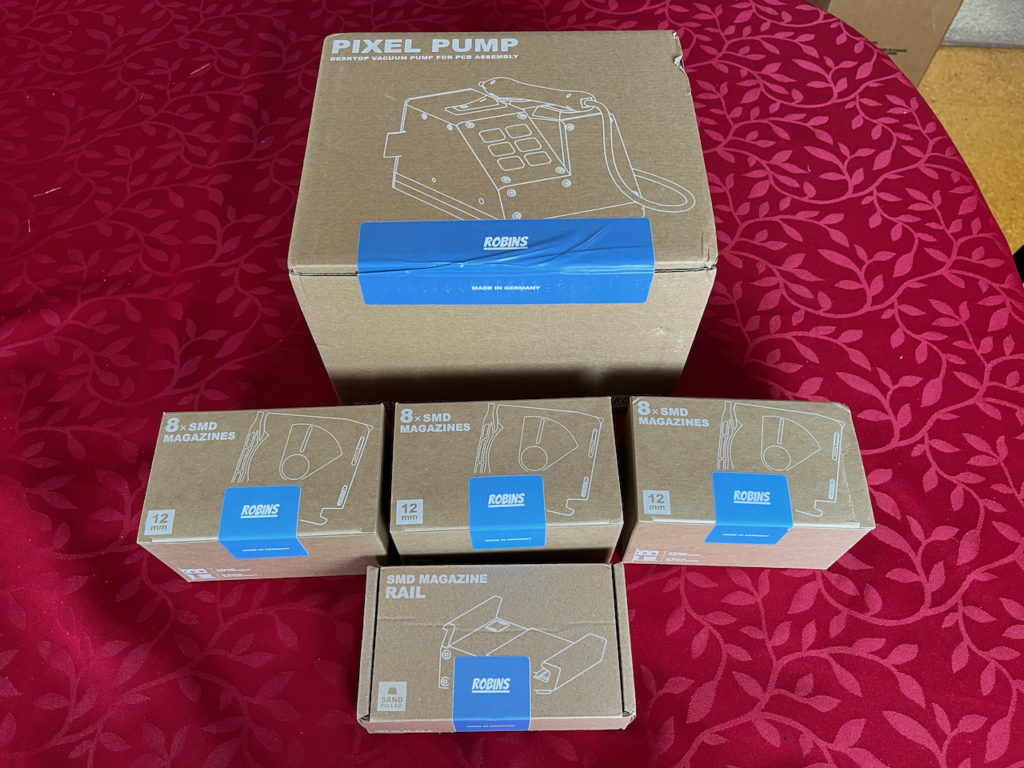
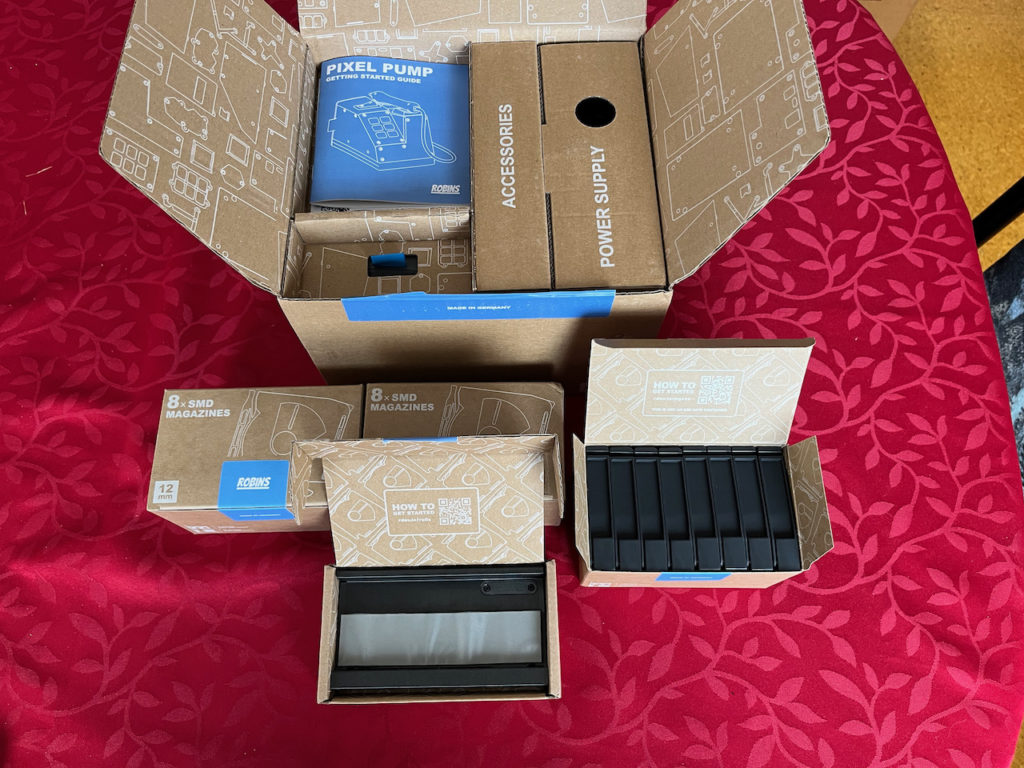
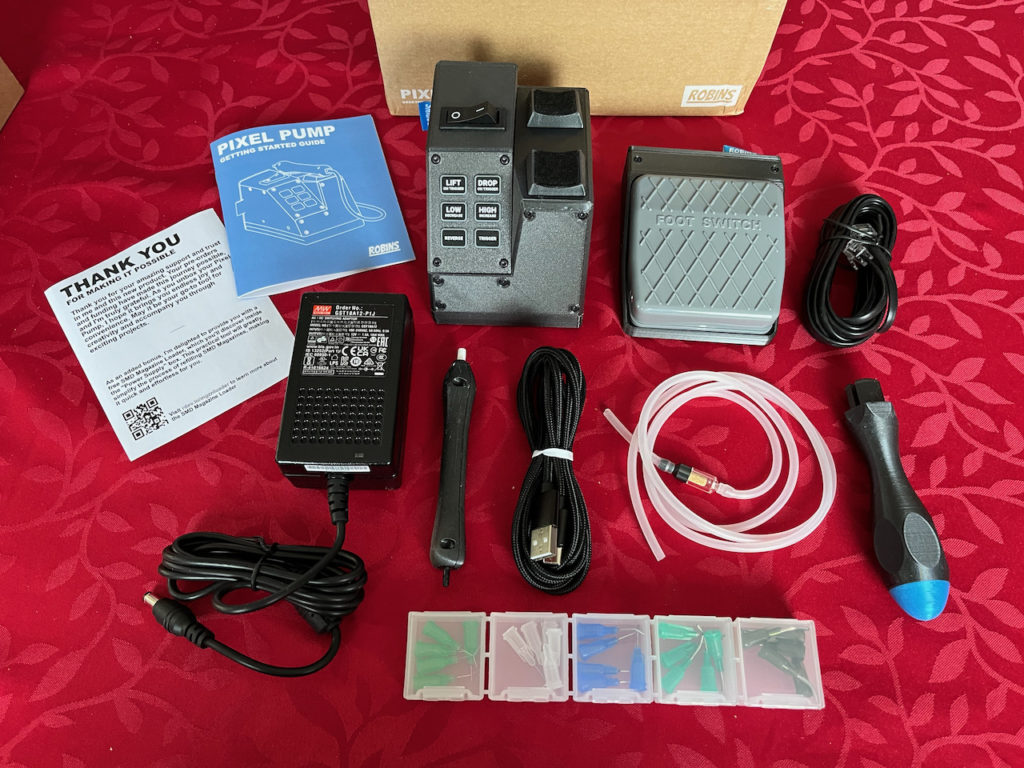
Apart from the very professional packaging, my first reaction was how compact the unit was. When buying something from just pictures and videos, it’s easy to imagine the device being bigger than it actually is.
This was great, as it ultimately takes up even less space on my workbench than I’d imagined.
On setting up my Pixel Pump, I was pleased to also remember that it’s powered by a 12V DC Jack. Although it is supplied with a 12V IEC socketed Power Adapter, I already have a 12V DC Power feed for my workbench, so I was just able to power the Pixel Pump from an exisiting 12V power lead, saving me yet another mains socket!
The refined SMD Magazines and the Magazine Rail are also a significant step up from my previously 3D printed versions. The injection moulding provides a very professional finish to the now spring-loaded and covered SMD Cartridges, and the Magazine mounting Rail is nicely tweaked and weighted.
In addition, I was pleased to find that my existing, earlier generation, 3D printed cartridges still fitted nicely into the new Magazine Rail. So, I could use the new Rail immediately, without having to first move components over to the new SMD Magazines.

Once setup, I was able to dive straight into testing the Pixel Pump. And, in a word: Awesome!
The foot pedal control and the suction power, were perfect. As I was already familiar with using a vacuum pump for SMD placement, I was straight into some SMD PCB board assembly.
After using a modified aquarium pump for several years, I can say that my investment in a Pixel Pump has been money well spent. It has turned my slightly tedious (but still better than tweezers), modified aquarium pump solution, into a really convenient, easily controlled, and enjoyable, Pick & Place experience!
Therefore, I have no hesitancy in recommending the Pixel Pump as an ideal solution for any Maker who designs SMD based projects, but isn’t able to justify the cost, the space, and the effort, of a fully automated Pick & Place solution.
Let’s face it, that probably accounts for most modern hobbyist makers, who generally make anything from just single board projects, up to small batch runs of SMD based products.
Finally, I’ll note that my views are simply from my experience alone. This review was not sponsored in any way.
If you’d like to know more about the Pixel Pump, just visit the Robins Tools website.
